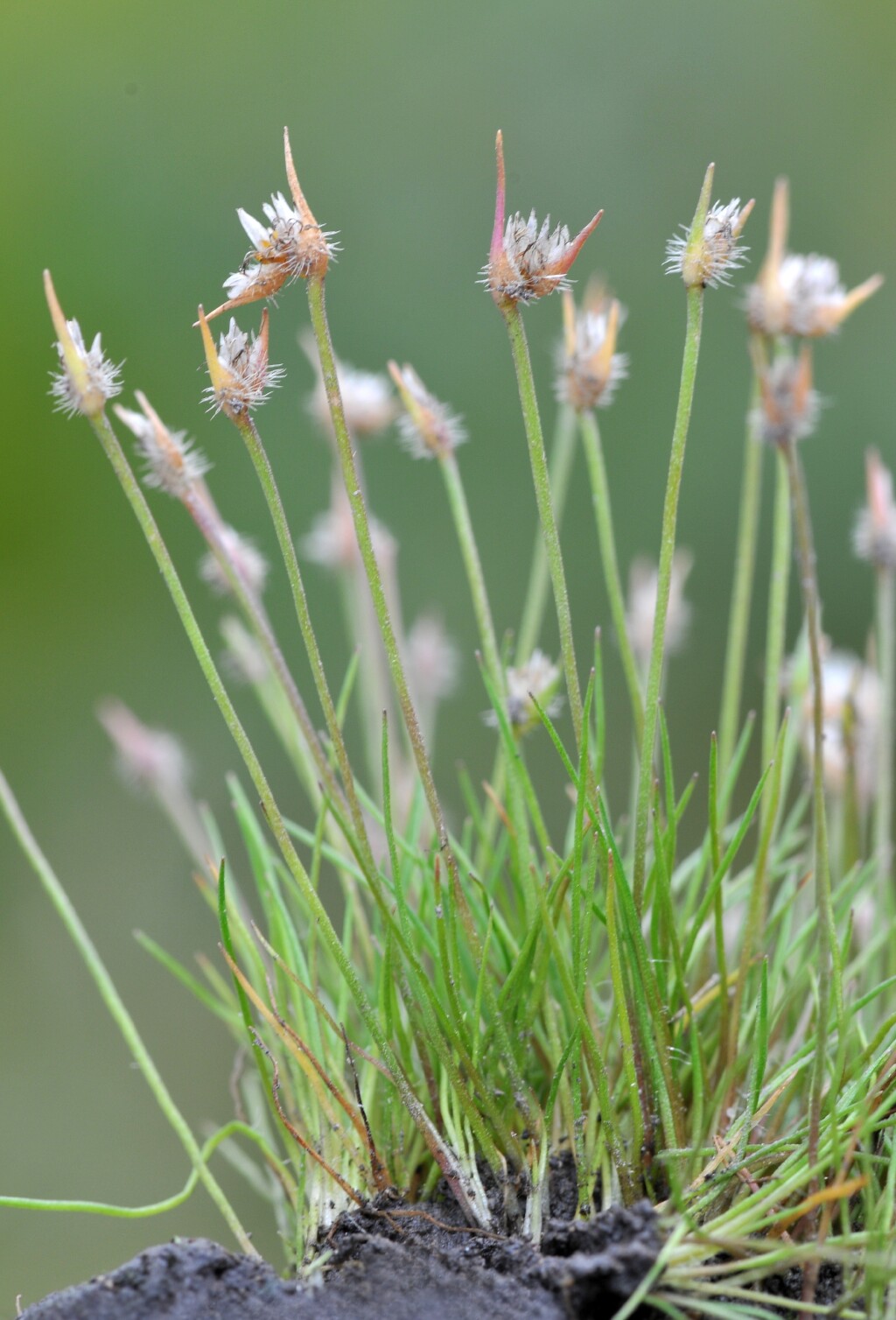Centrolepis fascicularis
Labill. Tufted CentrolepisTufted herb. Leaves 10–25(–35) mm long, ± erect, straight to curved, and thread-like, glabrous or sparsely hairy on sheath and lower part of blade. Inflorescence borne on an axis (8–)10–40(–50) mm long, hence flowers mostly held above the leaves; bracts covered with long, multicelled, rigid hairs; lower bract often inserted 0.5–1 mm below the upper one; both bracts with a basal sheath 2–2.5 mm long; lower bract slightly longer than upper bract. Lower bract tapering into a straight lamina 3–6 mm long. Upper bract tapering into a straight lamina 2–4 mm long. Inflorescence units 4–8 per head-like cluster. Stamens (absent or) 1 per inflorescence unit, not joined to each axis bearing carpels. Carpels 2–4 in subopposite to alternate pairs; styles c. 1.5–1.8 mm long, almost free. Flowers Oct.–Jan.
GleP, VVP, GipP, OtP, WaP, Gold, CVU, GGr, DunT, NIS, EGL, EGU, WPro, HSF, HNF, OtR, Strz, HFE. Also WA, SA, Qld, NSW, Tas. Locally common on damp sand or moist shallow soils, often overlying rock.
Conn, B.J. (1994). Centrolepidaceae. In: Walsh, N.G.; Entwisle, T.J., Flora of Victoria Vol. 2, Ferns and Allied Plants, Conifers and Monocotyledons, pp. 190–196. Inkata Press, Melbourne.
 Spinning
Spinning




